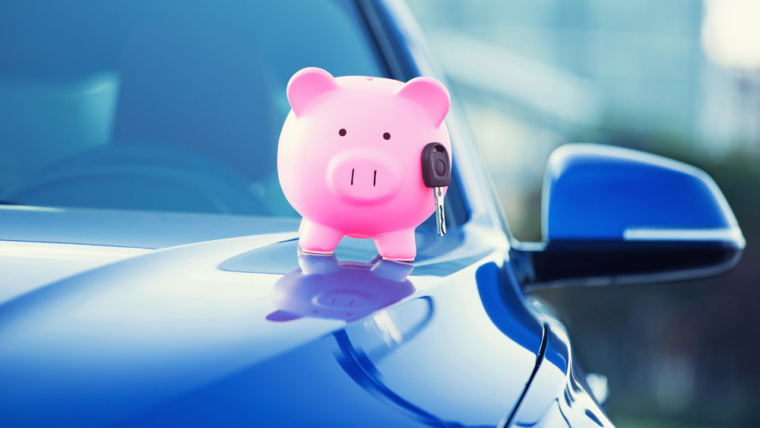Buying a car is a big financial commitment; and sometimes, things don’t go as planned. One common issue many people face is being upside-down on a car loan, meaning you owe more than your car is currently worth. This situation, known as negative equity, can feel overwhelming. But don’t worry—there are solutions. This guide will discuss ways to fix an upside-down car loan and get back on track.
Whether in San Diego or anywhere else, these strategies can help you regain control of your car finances and improve your credit situation. Let’s get started!
What Does It Mean to Be Upside-Down on a Car Loan?
An upside-down car loan occurs when the remaining balance on your car loan exceeds the car’s actual market value. Many commonly refer to this situation as negative equity. For example, if you owe $15,000 on your car loan and the vehicle’s current value is only $10,000, you will have $5,000 as negative equity.
Being upside-down on your car loan can complicate selling or trading in your vehicle. If you decide to sell the car at its current market value, you will still need to pay the difference between what you owe on the loan and what you can get from the sale. This financial gap can create a challenging situation, as you may need to come up with additional cash to pay off the loan completely.
However, it’s essential to know that there are strategies to address this issue, allowing you to regain financial stability and eventually move past the negative equity situation.
Refinancing Your Car Loan
One of the most effective ways to address an upside-down car loan is to refinance your current loan. Refinancing refers to a new lender purchasing your original loan, and replacing it with a new one, ideally offering better terms. Here’s how it can help:
- Lower Interest Rates: If you notice that interest rates have dropped since you first took out your loan or your credit score has risen, consider refinancing to lock in a lower interest rate potentially. This means you’ll pay less over the life of the loan, reducing the total cost.
- Extended Loan Term: Another option is to lengthen the term of your loan, which can help lower your monthly payments. Be cautious, though—while this can provide short-term relief, it may increase the overall cost of the loan. The strategy here is to continue to make the original payment amount even if your new payment is lower.
Refinancing is worth considering if you’re struggling to keep up with your current payments or want to minimize negative equity’s impact. Make sure to shop around and compare rates before making a decision.
Making Larger Payments
If you can afford it, one of the simplest ways to fix an upside-down car loan is to make larger payments on your loan. Paying more than your monthly minimum, you’ll reduce the principal balance more quickly. This, in turn, helps close the gap between what you owe and what your car is worth.
For example, if you’re upside-down by $3,000, making an extra $200 or $300 monthly payment can significantly speed up reaching positive equity. Additionally, making additional payments can save you money on interest, helping you pay off the loan faster. Even making small extra payments can significantly impact your loan balance over time.
Keep the Car Longer
If you’re upside-down on your car loan, selling or trading in your vehicle might not be the best solution—at least not right away. One option is to keep the car longer than you initially planned. Cars lose value rapidly during the first few years, but depreciation decreases afterward.
By holding onto your car for a few more years, you’ll give yourself more time to pay down the loan and catch up with the car’s declining value. In the long run, this strategy can help you avoid the negative financial impact of selling the car while upside-down.
Selling the Car Privately for More
If you decide that selling the car is your best option, you might want to sell it privately rather than trade it in at a dealership. Although trading in your vehicle is convenient, dealers typically offer a lower amount than you could receive in a private sale.
Selling your car privately allows you to get closer to its market value, which could help reduce the negative equity. However, selling your vehicle privately often requires more time and effort. You must handle advertising, negotiating, and meeting with potential buyers. But the financial payoff could be worth it if you’re willing to work.
Pay Off the Loan with Savings or Another Loan
Another option to deal with an upside-down car loan is to pay off the negative equity using savings or a personal loan. This approach can be beneficial if negative equity is relatively small. You can sell or trade in the car without worrying about the remaining loan balance by paying off the difference.
A personal loan might be a solution if you don’t have enough savings to cover the negative equity. Remember that personal loans usually carry higher interest rates, so it’s essential to consider the pros and cons before choosing this option.
The Benefits of Gap Insurance
One final thought and an effective way to manage negative equity is through gap insurance. This type of insurance explicitly covers the difference between your loan balance and the actual cash value of your car if the vehicle is involved in a total loss accident or someone steals it. Gap insurance becomes particularly valuable when your car’s value has decreased significantly due to depreciation, which often happens faster than many car owners realize.
For example, if your car gets into an accident and is considered a total loss, your standard insurance may only cover the vehicle’s current market value. In this situation, gap insurance will cover the remaining balance on your loan, protecting you from financial strain.
If you live in San Diego and worry about how quickly your car may lose value, investing in gap insurance can provide peace of mind and essential financial protection, ensuring you are not left paying off a loan for a vehicle you can no longer drive.
Rebuilding Your Credit
Navigating an upside-down car loan can be stressful, but it also offers a chance to rebuild your credit. By making consistent, on-time payments and gradually reducing your loan balance, you can enhance your credit score over time.
A better credit score opens up more opportunities for refinancing or getting better loan terms on your next car purchase. Keeping your credit in good standing is essential, especially if you plan to apply for another car loan.
How FA Financing Can Help
If you’ve struggled with bad credit and need help securing a car loan, FA Financing is here to assist. They specialize in helping individuals with less-than-perfect credit get the financing they need to drive away in a car. Whether trying to refinance an upside-down loan or get a fresh start with a new vehicle, FA Financing offers flexible solutions tailored to your situation.
Having a reliable car is crucial in a city like San Diego, where public transportation options might not fit your daily needs. FA Financing works with lenders who understand your challenges and are willing to offer terms that work for you.
By partnering with FA Financing, you’ll have access to a team of experts who can help you navigate the complex world of auto loans. They’ll work with you to find a loan that fits your budget and helps rebuild your credit at the same time. Whether you’re dealing with an upside-down car loan or looking for a new start, FA Financing has the tools and resources to get you back on track.


